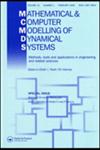Determination of 3D near fault seismic behaviour of Oroville earth fill dam using burger material model and free field-quiet boundary conditions
IF 1.8
4区 数学
Q3 COMPUTER SCIENCE, INTERDISCIPLINARY APPLICATIONS
Mathematical and Computer Modelling of Dynamical Systems
Pub Date : 2022-02-27
DOI:10.1080/13873954.2022.2033274
引用次数: 7
Abstract
ABSTRACT In this study, the three-dimensional (3D) near-fault earthquake performance of the Oroville dam is examined considering a special material model and various seismic boundary conditions. The 3D finite-difference model of the Oroville EF dam is modeled using the finite difference method. Burger Creep (BC) material model is utilized for the foundation and dam body materials. Special interface elements are taken into account between the dam body and foundation. Fix, free field, and quiet seismic boundary conditions are considered for 3D nonlinear earthquake analyses. Total six various strong near-fault earthquakes are used in the 3D analyses. According to the non-linear earthquake analyses, principal stresses, horizontal and vertical displacements for three nodal points are assessed in detail and numerical results are compared for reflecting and non-reflecting seismic boundary conditions. It is clearly understood that seismic boundary conditions should not be utilized randomly for 3D modeling and analysis of EF dams.利用burger材料模型和自由场-静边界条件确定Oroville土坝近断层三维地震行为
摘要在考虑特殊材料模型和各种地震边界条件的情况下,研究了奥罗维尔大坝的三维近断层地震性能。采用有限差分法建立了奥罗维尔EF坝的三维有限差分模型。基础和坝体材料采用Burger Creep (BC)材料模型。坝体与基础之间考虑了特殊的界面元素。三维非线性地震分析考虑了固定、自由场和安静地震边界条件。三维分析共使用了6次不同的近断层强地震。根据非线性地震分析,详细计算了三个节点的主应力、水平和垂直位移,并对反射和非反射地震边界条件下的数值结果进行了比较。明确地认识到,地震边界条件不应该随机地用于EF坝的三维建模和分析。
本文章由计算机程序翻译,如有差异,请以英文原文为准。
求助全文
约1分钟内获得全文
求助全文
来源期刊
CiteScore
3.80
自引率
5.30%
发文量
7
审稿时长
>12 weeks
期刊介绍:
Mathematical and Computer Modelling of Dynamical Systems (MCMDS) publishes high quality international research that presents new ideas and approaches in the derivation, simplification, and validation of models and sub-models of relevance to complex (real-world) dynamical systems.
The journal brings together engineers and scientists working in different areas of application and/or theory where researchers can learn about recent developments across engineering, environmental systems, and biotechnology amongst other fields. As MCMDS covers a wide range of application areas, papers aim to be accessible to readers who are not necessarily experts in the specific area of application.
MCMDS welcomes original articles on a range of topics including:
-methods of modelling and simulation-
automation of modelling-
qualitative and modular modelling-
data-based and learning-based modelling-
uncertainties and the effects of modelling errors on system performance-
application of modelling to complex real-world systems.

 求助内容:
求助内容: 应助结果提醒方式:
应助结果提醒方式:


